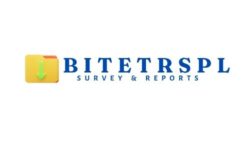Introduction
Understanding audience behavior is no longer optional in a data-driven world; it is now crucial. Governments, corporations, and nonprofit organizations all look for methods to engage with the public, comprehend their requirements, and make wise judgments. Two of the most effective methods for obtaining such information are surveys and polls. They assist organizations in gathering feedback, measuring as sac, and forecasting trends.
Asking questions alone, however, is not enough to create an effective survey or poll. From creating the appropriate questions to skillfully evaluating the findings, it calls for a methodical approach. From conception to insight, this process guarantees that the gathered data is transformed into workable plans. Even the best-laid plans might yield inaccurate or irrelevant results if they are not properly planned and analyzed.
The scope, depth, and goal of surveys and polls differ from one another. Selecting the appropriate approach requires an understanding of these differences. Gathering reactions is important, but so is turning them into information that motivates action.
The Difference Between Surveys and Polls
Despite their apparent similarities, surveys and polls have different functions. A survey is an organized technique for gathering data that consists of several questions and is frequently used to delve deeply into a subject. To promote deeper knowledge, they may contain both closed-ended and open-ended questions. When you need to examine complex issues, patterns, or trends, surveys are perfect.
A poll, on the other hand, is a brief, targeted inquiry (or a very brief series of questions) intended to determine the general public’s opinion on a certain subject. Polls are often used to capture immediate sentiment or reactions. They are faster to conduct and analyze but lack the depth of surveys.
Which matters more? That depends on your objective. If you want a quick snapshot of public opinion, polls are your go-to tool. If you need comprehensive insights for decision-making, surveys hold the advantage. From creation to insight, the choice you make will influence the quality and depth of the results. Selecting the wrong method can lead to wasted resources and missed opportunities for understanding your audience.
Heading 1: Designing Effective Surveys – The Blueprint for Success
Designing a survey is both an art and a science. The first step is defining the purpose clearly. Without a well-defined goal, your survey may end up collecting data that is interesting but not actionable. Start by identifying the key questions you want answered. Then, decide on the target audience. This clarity will guide every decision you make, from question design to distribution.
Write inquiries that are unbiased and succinct. Steer clear of loaded or leading language that can skew the results. For instance, a neutral phrase would be, “How would you rate our customer service?” rather than, “Do you like our excellent customer service?” This guarantees truthfulness and precision in answers.
Next, choose the right format—multiple choice, rating scale, or open-ended questions. The format impacts how easily responses can be analyzed later. Using a mix of question types often works best, providing both quantitative and qualitative data.
Distribution is equally important. You can send surveys via email, social media, or embed them on your website. Make sure your audience can access them easily. The length of the survey should balance detail with respondent convenience. Overly long surveys can cause drop-offs, reducing your response rate.
From creation to insight, the design phase is where you set the foundation for meaningful analysis. A well-structured survey not only improves the quality of data collected but also enhances participant engagement, ensuring that the insights you gain are both reliable and valuable.
Heading 2: Polls as a Pulse Check – Fast, Focused, and Impactful
Polls are the quick wins of audience engagement. They are short, simple, and focused on a single issue. This makes them perfect for capturing the mood or opinion of a group in real time. Businesses often use polls on social media to increase interaction while gaining instant feedback.
The strength of polls lies in their simplicity. A single well-crafted question can reveal public sentiment, guide marketing strategies, or test product ideas. For example, a restaurant might post a poll asking, “Which new dish would you like to see on our menu?”. The responses not only engage customers but also provide data for future decisions.
However, the simplicity of polls can also be a limitation. Since they focus on one topic, they lack the depth to explain why respondents feel a certain way. This is why polls are best used as a complement to surveys rather than a replacement.
Crafting an effective poll involves being specific and relevant. The question should be clear, avoiding ambiguity. Offering two to four answer options ensures ease of choice while still providing meaningful differentiation.
From creation to insight, polls serve as a real-time barometer of audience opinion. They are excellent for measuring sentiment during events, campaigns, or trending discussions. While they may not provide the depth of a survey, their speed and engagement power make them an essential part of a well-rounded data collection strategy.
Which Matters More?
Neither surveys nor polls are universally “better.” Their value depends entirely on your goals. Surveys excel when you need comprehensive data to inform strategic planning. They uncover patterns, motivations, and detailed feedback that can shape long-term initiatives.
Polls, in contrast, are invaluable for quick decision-making. They provide immediate insights that can influence real-time actions, such as campaign adjustments or product tweaks.
In practice, the most effective organizations use both. A poll might highlight a sudden shift in customer opinion, prompting a detailed survey to explore the reasons behind it. This combination allows for both agility and depth in decision-making.
From creation to insight, balancing these tools ensures that you are not just gathering data but also translating it into informed action. The real power lies in knowing when and how to use each tool to maximize impact.




